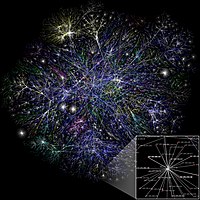
Percolation model for conductivity of composites with segregation of small conductive particles on the grain boundaries
Sign Up to like & getrecommendations! Published in 2020 at "Journal of Materials Science"
DOI: 10.1007/s10853-020-04408-w
Abstract: The percolation model of electrical conductivity of a two-component medium, formed by a mixture of conductive small and non-conductive large particles with the adhesion of small particles to the surface of large ones and subsequent… read more here.
Keywords: percolation model; conductivity composites; model; conductivity ... See more keywords

Einstein Relation for Random Walk in a One-Dimensional Percolation Model
Sign Up to like & getrecommendations! Published in 2019 at "Journal of Statistical Physics"
DOI: 10.1007/s10955-019-02319-y
Abstract: We consider random walks on the infinite cluster of a conditional bond percolation model on the infinite ladder graph. In a companion paper, we have shown that if the random walk is pulled to the… read more here.
Keywords: random walk; model; einstein relation; percolation model ... See more keywords

Critical exponents and the universality class of a minesweeper percolation model
Sign Up to like & getrecommendations! Published in 2020 at "International Journal of Modern Physics C"
DOI: 10.1142/s0129183120501296
Abstract: We introduce a minesweeper percolation model, in which the system configuration is obtained via an automatic minesweeper process. For a variety of candidate networks with different lattice configur... read more here.
Keywords: critical exponents; minesweeper percolation; percolation model;

Percolation Model of Friction Wear for Carbon Plastics Based on Ultrahigh-Molecular-Weight Polyethylene
Sign Up to like & getrecommendations! Published in 2018 at "Journal of Friction and Wear"
DOI: 10.3103/s1068366618060065
Abstract: A percolation model for two-component random materials, namely, the model of a random resistor grid (RRG) or an “ant limit” is used to describe the frictional characteristics of composites such as ultrahigh–molecular-weight polyethylene/carbon fiber. It… read more here.
Keywords: weight polyethylene; ultrahigh molecular; percolation model; molecular weight ... See more keywords